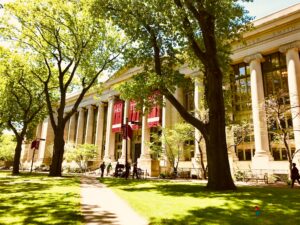The Hill: Race-preferential admissions offer only a mirage of opportunity

Individuals should be treated as individuals and not on the basis of their membership in racial groups. Nonetheless, race preferences in college and graduate school admissions are sometimes defended as opening up valuable opportunities to racial and ethnic minority students. But an important new study indicates that race-preferential admissions aren’t providing opportunity, but only a mirage of opportunity.
Most of us learn best when we’re in a class of peers whose classmates have the same background knowledge. It’s good to be neither too far ahead nor behind the rest of the group.
Some examples from my own life: As a high school student, I went back and forth on whether I’d get more out of taking Calculus AB or BC. Twenty years later, as a parent, I wondered if I’d set my daughter with a summer birthday up best for success by putting her in kindergarten shortly after she turned 5, or instead, “redshirting” a year. I put my golden retriever, Buffy, in intermediate obedience a second time instead of leaping to advanced because, as her teacher said, getting the foundations right before attempting more sophisticated training is important.
Yet this basic principle suddenly becomes hotly controversial when applied to race preferences in admissions. Is the boost given to racial and minority students in admissions causing them to attend schools where they learn less than they might at institutions where their preparation is closer to that of the median student?
Research into this question stretches back decades. It consistently indicates that race-preferential admissions, as practiced at nearly all major universities, hurt the students they are supposed to help. Students who receive race preferences in admissions are less likely to complete degrees in science, technology, mathematics or engineering; to pursue PhDs and subsequently enter academic careers; and law students are less likely to pass the bar.
While former Princeton and Harvard presidents William Bowen and Derek Bok’s “The Shape of the River” was intended as a defense of race-preferential admissions, their data tables indicate that “it is better to be an African American male at Penn State in the top third of the class than to be an African American male at Princeton in the bottom third of the class. The increased earnings he gets from high grades are worth almost twice the increased earnings he gets from attending a Tier 1 school.”
Similar effects exist for students with other types of admissions preferences. A study conducted at Duke University found that legacy students — those who received preferential treatment in admissions because a parent or grandparent graduated from Duke — also abandoned highly quantitative majors because of mismatch effects. Their collective drift away from the sciences cannot be explained by anti-legacy bias, lack of legacy role models, or any other explanations commonly offered to explain minority students’ attrition from science majors. Preparation gaps appear to be, by far, the bigger factor.
Most recently, law professors Rick Sander and Robert Steinbuch have found that “Law school mismatch is worse than we thought.” They examined data from 12 cohorts of law students at four law schools, covering about 6,500 students in all. They conclude, “A student’s degree of mismatch in law school is by far the strongest predictor of whether he or she will pass a bar exam on a first attempt.”
According to Sander and Steinbuch, students at an elite school with LSAT scores 12 to 14 points below the median of their fellow students (i.e., LSAT scores of 150-152) had only a 22 percent first-time bar-passage rate, while students with LSAT scores in the same range at the non-elite school in question had a 79 percent first-time bar-passage rate.
While some new law graduates can find good jobs in fields such as business, government or public policy that don’t require bar passage, the vast majority will want to pass the bar exam so that they can enter legal practice.
If race-preferential admissions are sorting minority students to schools where they are less likely to pass this vital test, then these preferences aren’t creating opportunity. They are just taunting students with a mirage of opportunity.
Sander and Steinbuch’s results are particularly timely because the Supreme Court is deciding twin cases challenging the legality of race preferences at Harvard and the University of North Carolina. The leading case permitting race-preferential admissions, Grutter v. Bollinger, holds that preferences are permissible when narrowly tailored to advance a compelling interest in student body diversity.
But how can a school have a compelling interest in diversity if preferences harm the students they are supposed to help? The narrow tailoring requirement means schools cannot use race more than necessary to achieve diversity goals. How are preferences narrowly tailored if they are hurting minority students?
If race preferences don’t work, what can be done to increase opportunities for disadvantaged students? The Supreme Court can vindicate other constitutional rights that have been too long relegated to second-tier status. These include the right to earn an honest living, the right of parents to choose the best schools for their children, and rights that protect against prejudiced policies such as exclusionary zoning.
With very few exceptions, treating individuals differently based on their skin color is wrong.
Yes, this bedrock legal and moral principle alone justifies ending race preferences. But the mismatched evidence that race preferences provide only a mirage of opportunity offers further support for ending this pernicious admissions practice.
This op-ed was originally published at The Hill on April 10, 2023.







